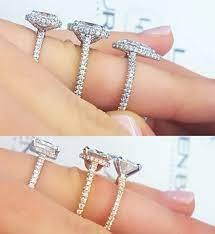If you’re looking for a diamond ring, you may be confused about whether to choose a natural diamond or a lab grown one. While both are real diamonds, the differences between the two aren’t so vast. For instance, lab grown diamonds are graded on the same scale as natural diamonds. This means that an expert gemologist can’t tell the difference. In fact, some engagement rings use both lab diamond vs natural.
Natural diamonds are better for the environment
A recent study has shown that natural diamonds are better for the environment than lab-grown diamonds. The reason for this is that mined diamonds create fewer emissions and waste than lab-grown diamonds. The study also points to the need for producers to use greener energy.
Constance Wu’s net worth is estimated to be around $8 million
While mined diamonds are better for the environment than lab-grown diamonds, their manufacturing processes have high environmental costs. For example, mining for diamonds requires the displace of thousands of tonnes of rock. Despite this, lab-grown diamonds do not cause as much pollution as mined diamonds, according to a study by Frost & Sullivan.
Diamonds are formed in the earth’s crust by extreme pressure and high temperature. A natural diamond can form thousands of feet beneath the surface of the earth. Lab-grown diamonds attempt to replicate this process by heating the gemstone to extreme temperatures and adding layers to it over time.
Lab-grown diamonds are cheaper
The cost of Lab-g rown diamonds is generally lower than natural diamonds. Natural diamonds are more expensive per carat than lab-grown diamonds, and natural diamonds are also rarer. However, some lab-grown diamond producers offer similar prices per carat for their synthetic diamonds. In addition to being cheaper, synthetic diamonds can be cut into any shape, including fancy shapes. The most common cut of synthetic diamonds is a round.
While natural diamonds are expensive, lab-grown diamonds can be a great option for many people. They’re available in a variety of sizes, from a single carat to four carats. Their color, clarity, and sparkle are all identical to natural diamonds. They cost between $1,000 and $2,000 depending on the quality of the diamond.
Moissanite is a lab-grown diamond
A lab-grown diamond is a gem that is created in a laboratory. This diamond is much more affordable than its natural counterpart and is often more durable. It is a great option for people who want a diamond ring but do not want to spend a fortune. Another advantage of buying a moissanite ring is that it will never break or lose its shine.
Although both are technically diamonds, moissanite is much harder than natural diamonds. This makes it more durable and resembles the natural gem. The price of a moissanite ring is about 1/34 of that of a diamond. It is also about as much as 50 percent less expensive than a diamond ring with a natural center stone.
They are graded on the same scale as natural diamonds
Lab diamonds are a form of man-made diamond that is very similar to natural diamonds in appearance and chemical composition. They are graded on the same scale as natural ones, and gemologists have a difficult time telling the difference between them without using a strong microscope. They have the same sparkling appearance and have the same types of color, clarity, and hardness.
As a result, they can be priced twenty to forty percent less than natural diamonds. A lab diamond’s price can range from $1,000 to $2,000, which is comparable to a mined diamond.
They are a great value for first-time buyers
The prices of lab-created diamonds are decreasing rapidly. With the technological advances made in the diamond industry, these diamonds are becoming more affordable and available. In addition, these diamonds are more beautiful and varied. This makes them a great value for first-time buyers.
Lab-grown diamonds can cost the same or less as a mined diamond. A mined diamond can trade hands over 20 times before reaching your retail jewelry store. Additionally, they can travel across five continents. This causes environmental and humanitarian issues. Additionally, diamonds traded from mine to retail store carry incremental markups.
Conclusion
Despite the low cost of synthetic diamonds, they do not offer as high a resale value. This is because these diamonds are created in large quantities and don’t have the rarity or history that a natural diamond has. However, a synthetic diamond doesn’t pose ethical or environmental dilemmas. In addition to being more sustainable, lab diamonds are not mined by using dangerous methods. Mining a natural diamond requires approximately 200 to 250 tons of earth. Since lab-created diamonds require less earth, the environmental impact is minimal xotic news.

